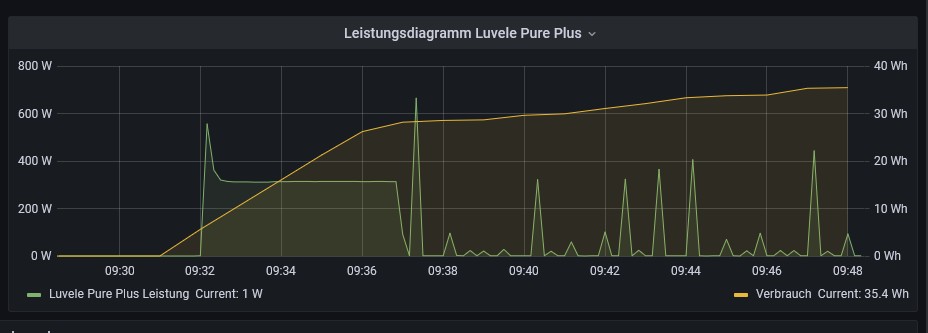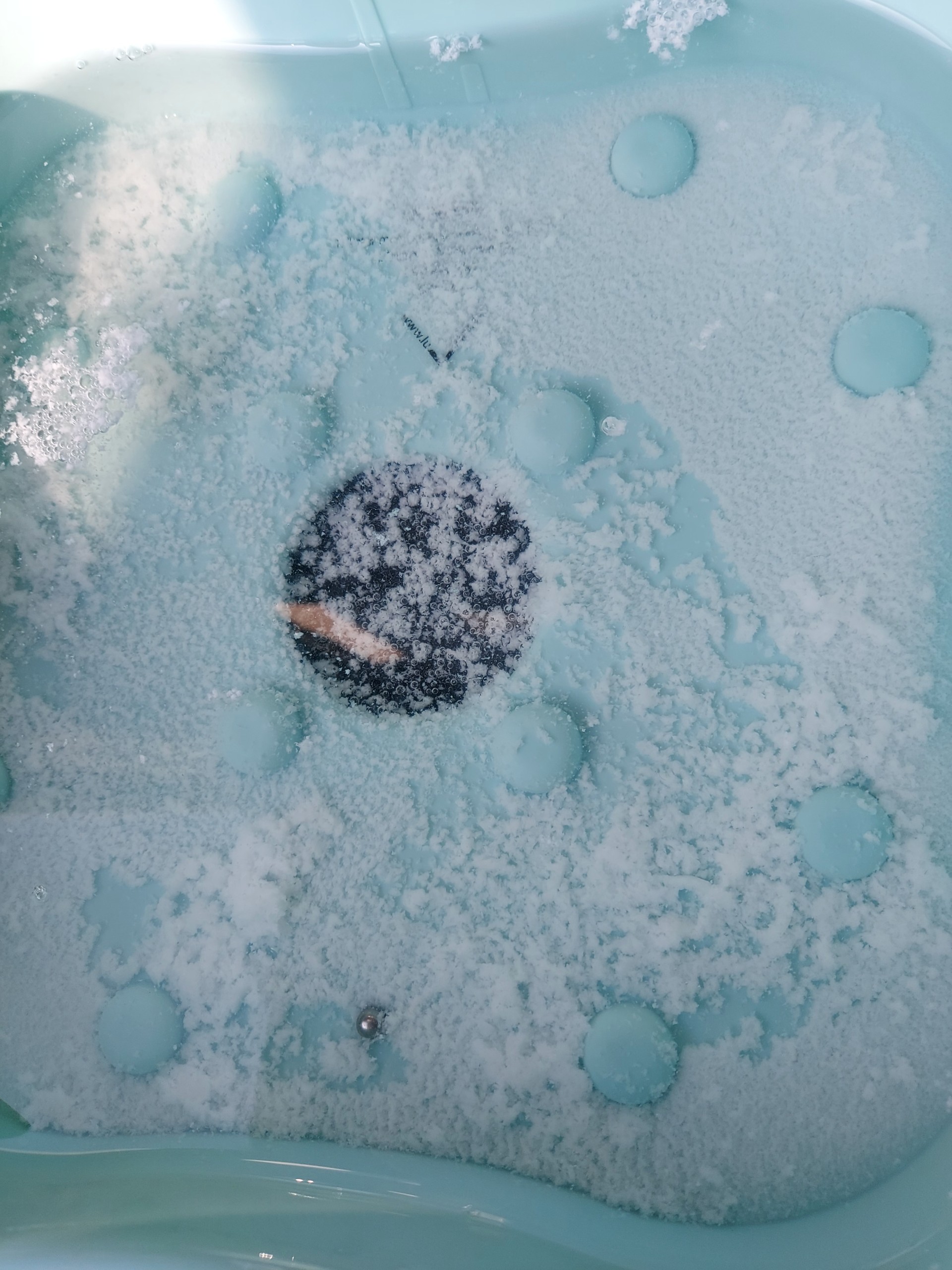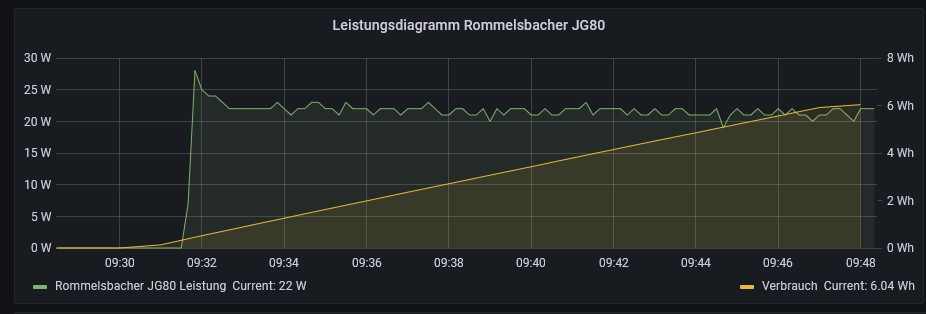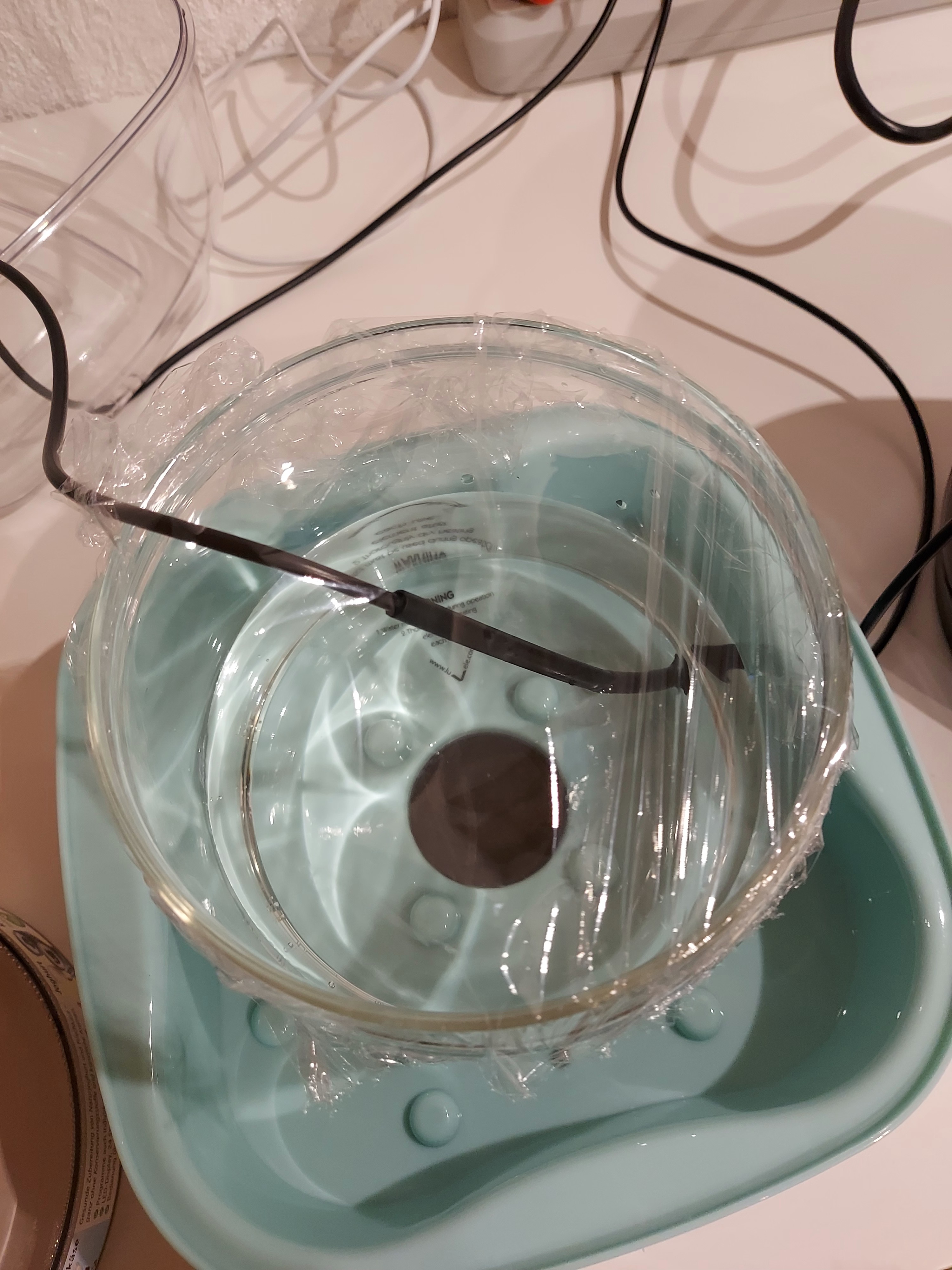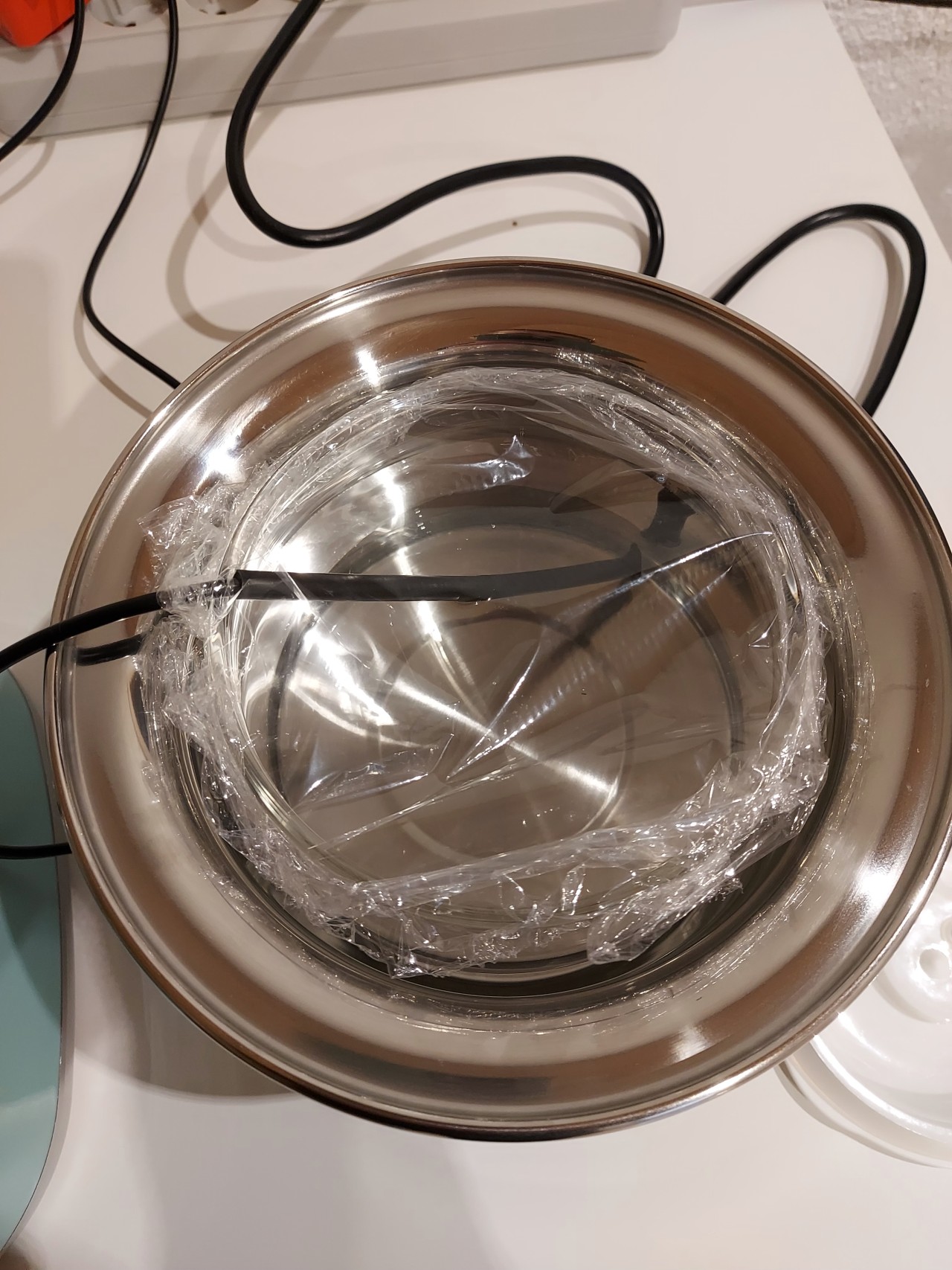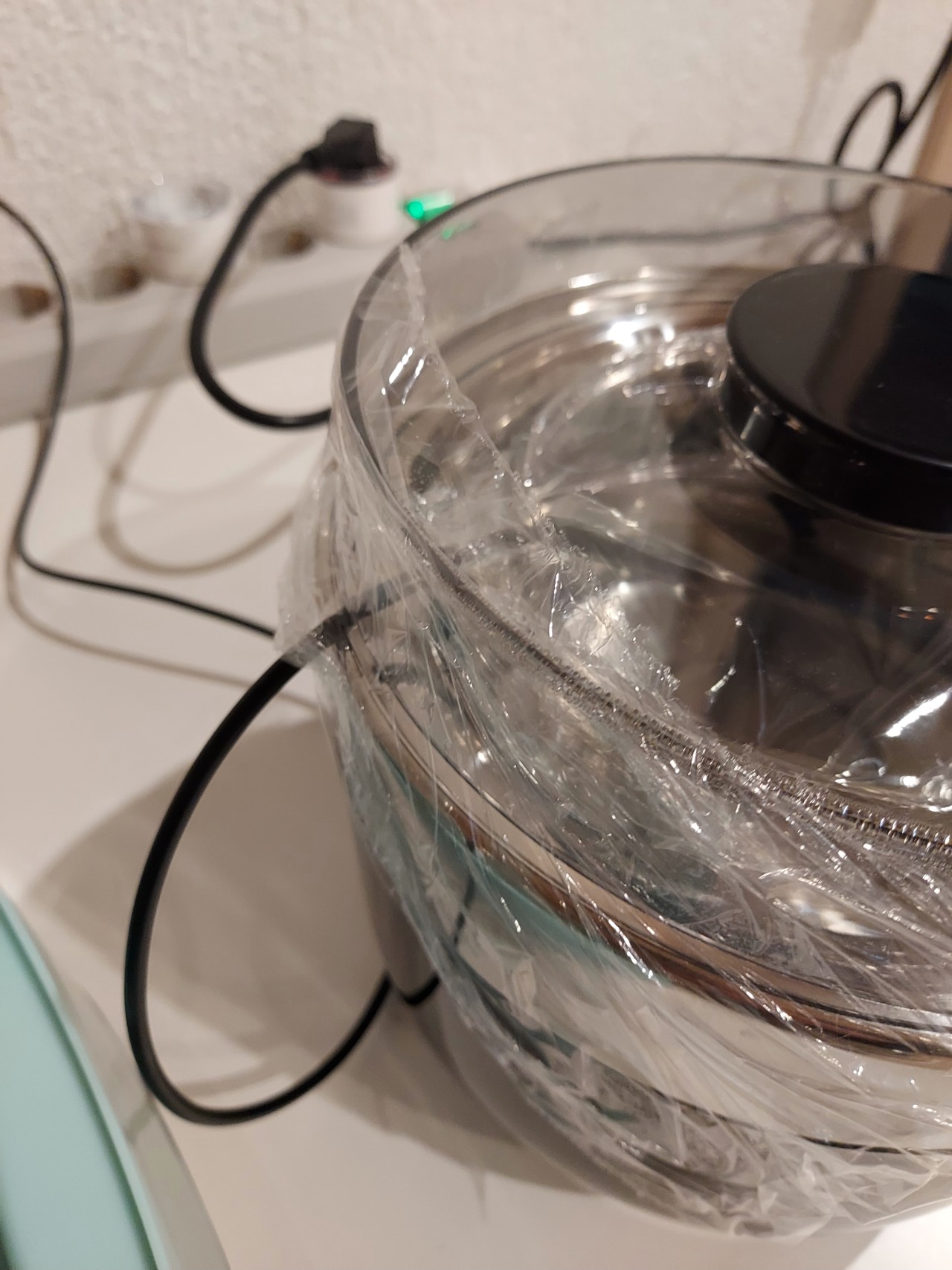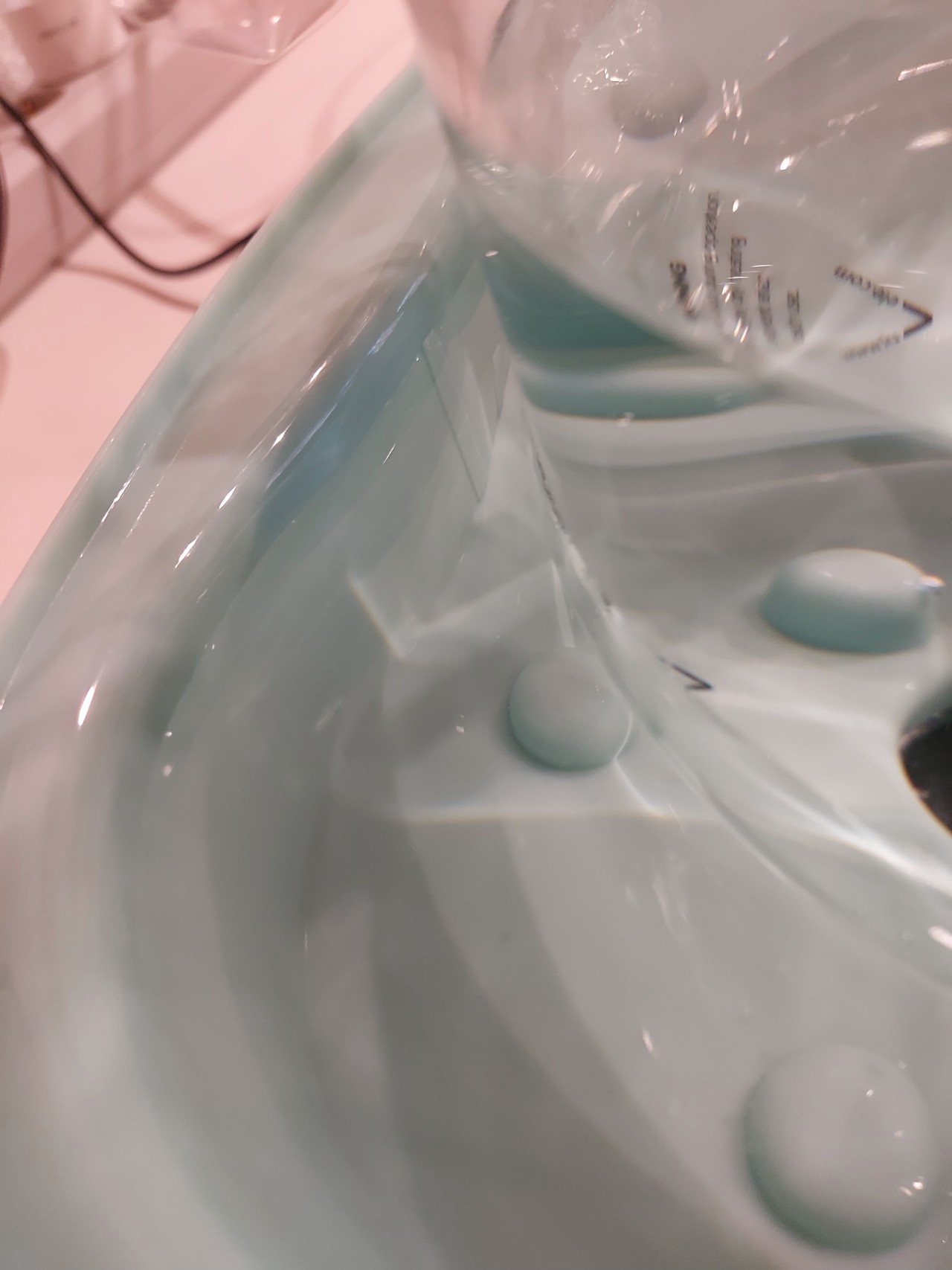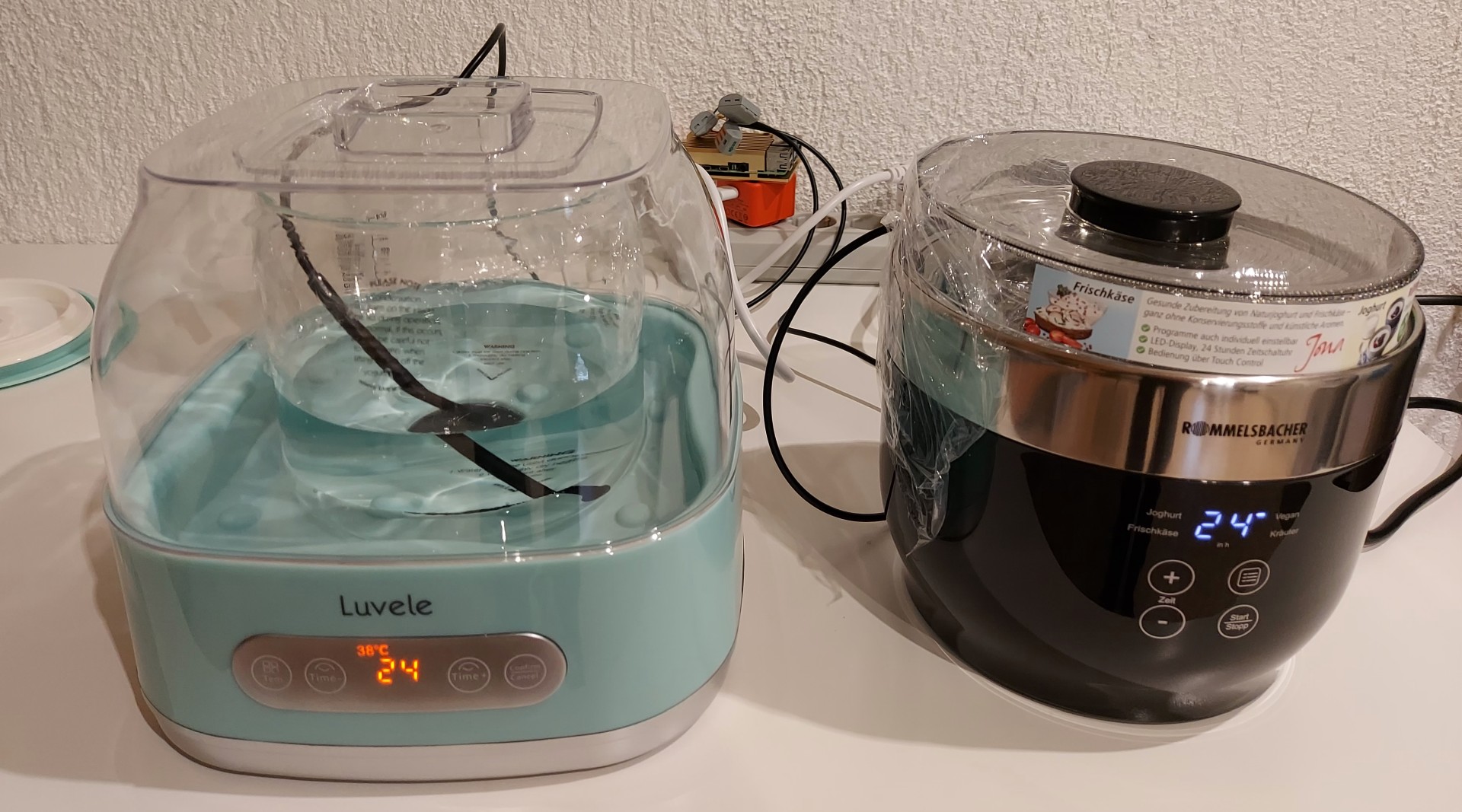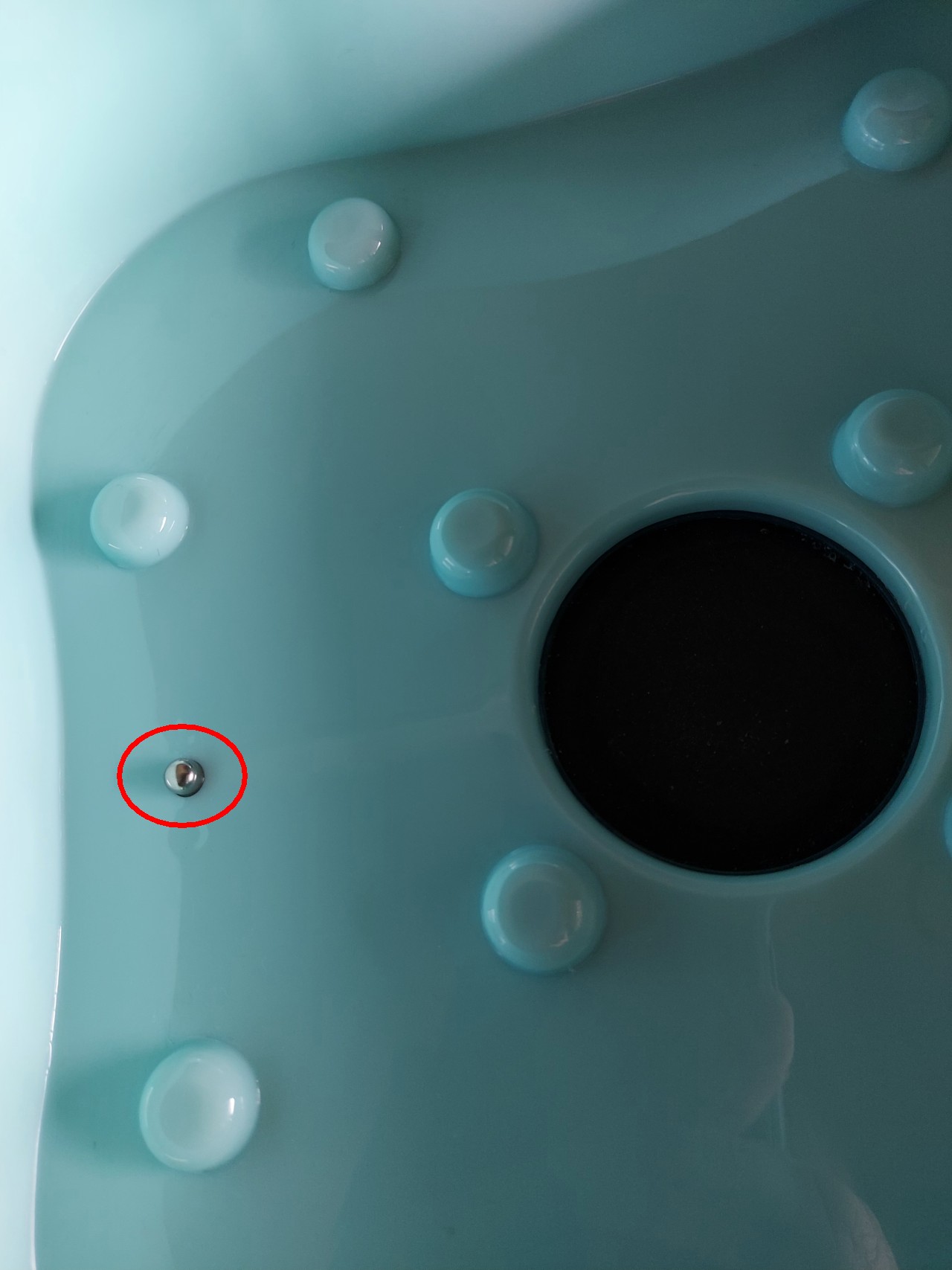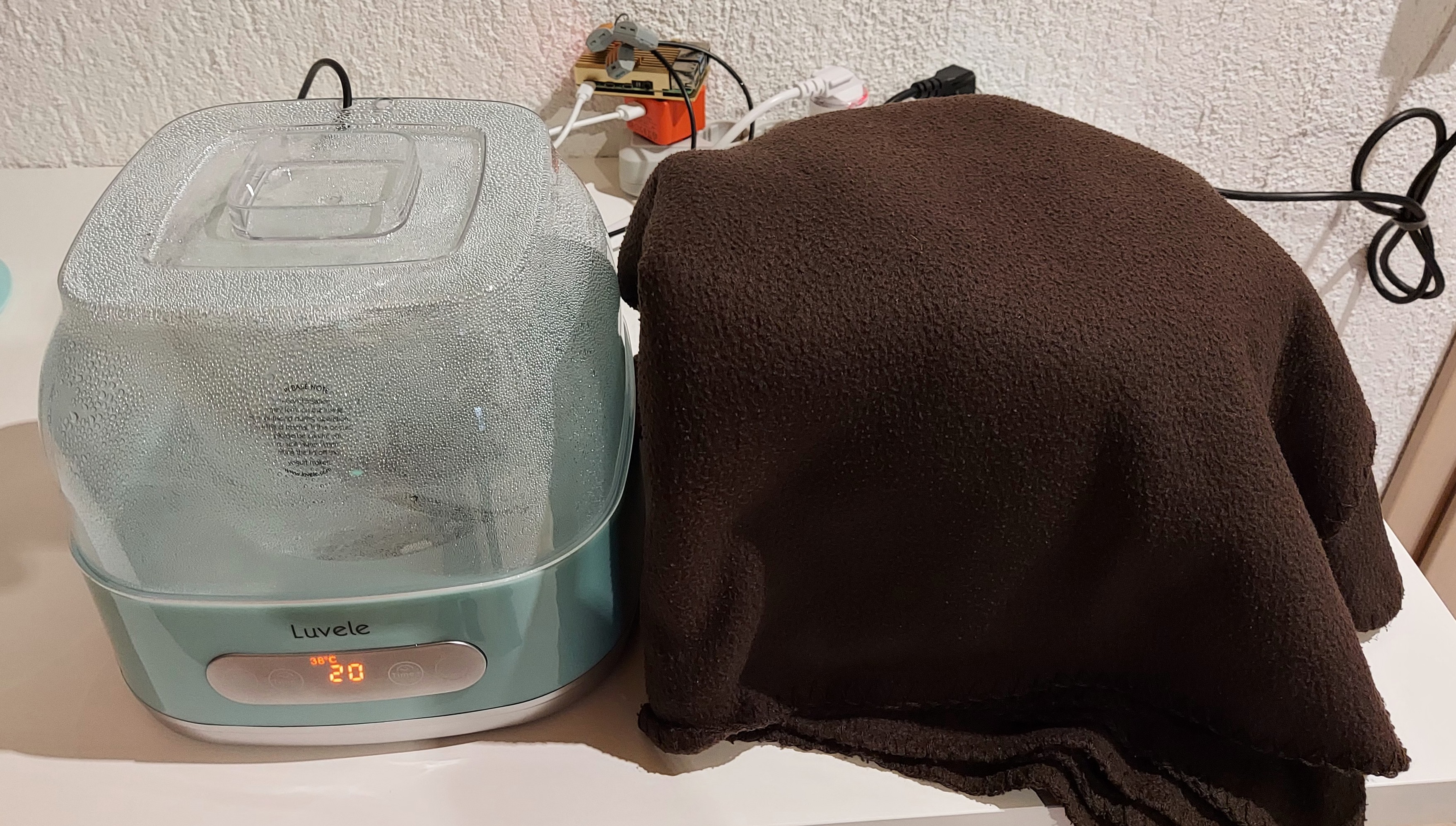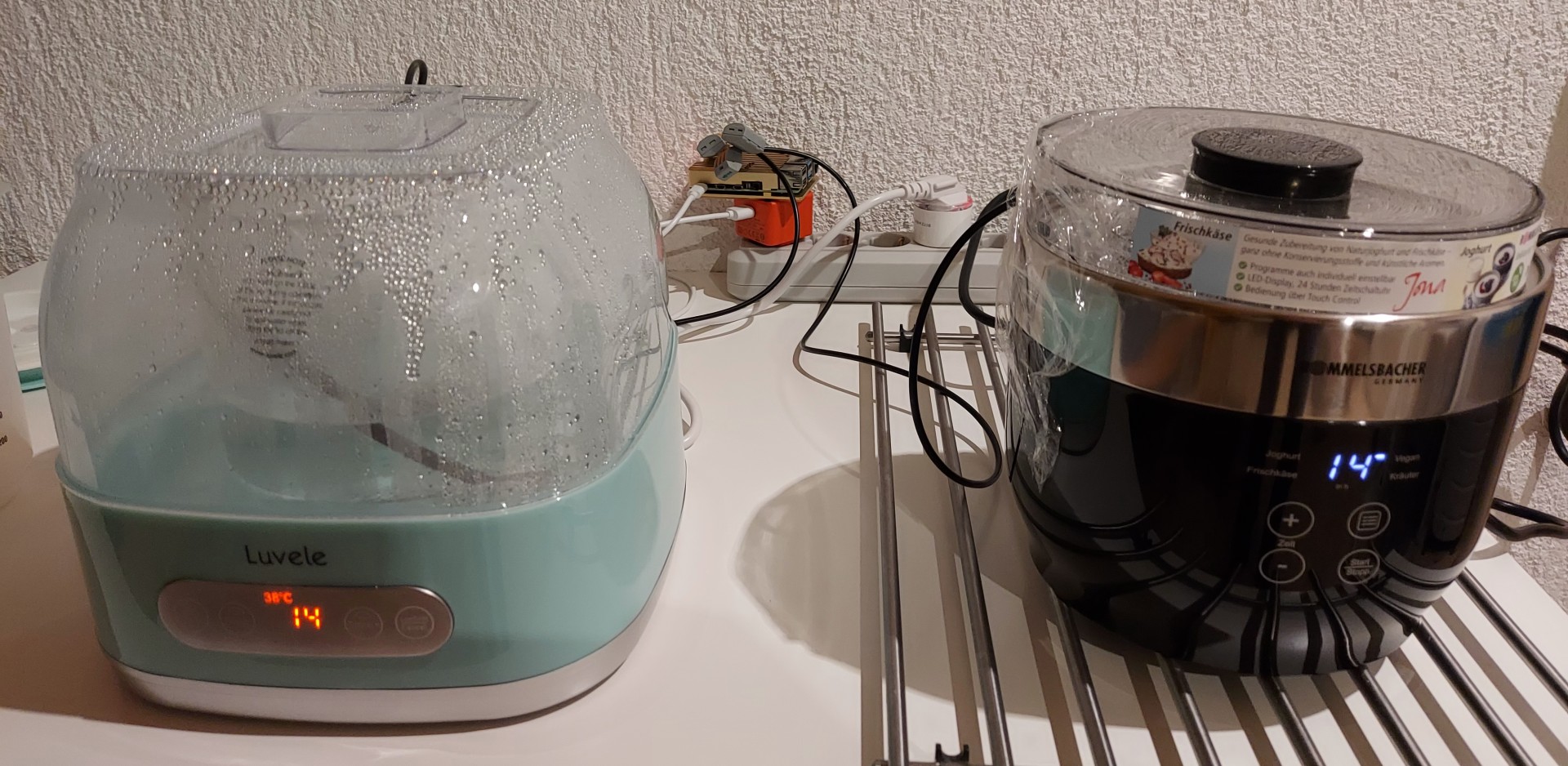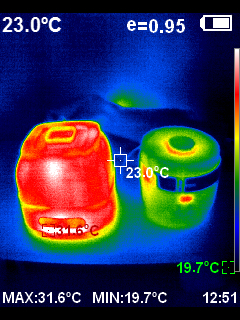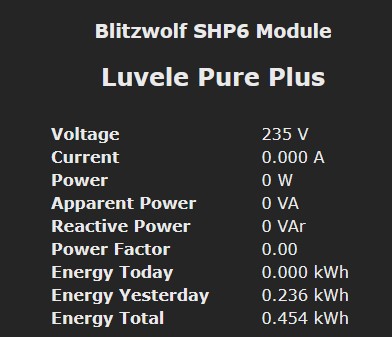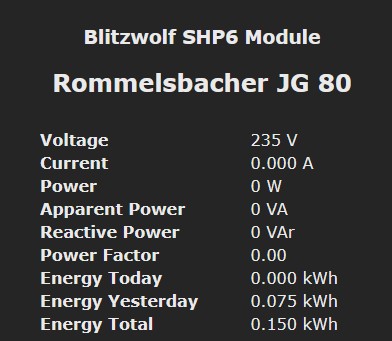Comparison / test / review of the yogurt maker Luvele Pure Plus and Rommelsbacher JG 80
This is the automated translated version of original post. Feel free to improve the translation.
It is very difficult to find a real comparison or test of yogurt makers. Haus und Garten Test has tested yogurt makers and also mentioned in its article that it is more sustainable because of less packaging waste to produce its own yogurt. How much electricity the individual devices need to produce 1 kg of yogurt, however, was not tested. This is also an important issue in terms of sustainability. The power consumption of the devices was indicated, but this says nothing at all about the total power consumption. Also, the shelf life of the homemade yogurt is given as very short at 10 days. If you really throw it away after that, it’s not very sustainable either. The yogurt from the supermarket quickly reaches 10 days since production until it lands on the plate of the customer.
Many small jars at a yogurt maker are annoying. You have to rinse a lot more, divide the milk evenly, etc. Therefore, I was looking for a yogurt maker that can be used with as large a jar as possible to have to make yogurt myself as infrequently as possible.
During my market research, I came across the Rommelsbacher JG80 and the Luvele Pure Plus yogurt maker. The special thing about the Juvele was that it comes with a 2 liter glass jar, which means you only have to make yogurt half as often.
Juvele Pure Plus the name says it all
The name Juvele Pure Plus yogurt maker is program. The scope of delivery is really very puritanical. A 2 liter yogurt container and that’s it in accessories. 73 € (exactly 72.95 €) is a proud price. For a 2nd yogurt jar, you get rid of a hefty 29 € (28.95 €). You should be able to expect some performance for this price, but is this expectation fulfilled?
Juvele’s arrogance
Juvele writes on its homepage
We have been designing and perfecting the perfect yogurt maker for eight years and we are sure that you and your family will love them!
I find this statement alone very arrogant. You don’t claim to have the best yogurt maker, no, you have the perfect yogurt maker. If something is perfect, then that means there is nothing to improve. There is a lot to improve, as this test will show. This sentence alone is a contradiction in terms. If something is perfect, then it can’t be perfected any further.
There are relatively fewer pictures of the Luvele yogurt maker here, as it is pretty well illustrated on the homepage. However, little effort has been made here as well. The picture shows a Euro plug (also known as type C “CEE 7/16”) as the power plug, but it comes with a grounding plug. This also makes sense, since the heating element is made of metal and has contact with the water.
Juvele: Cheaply produced sold at expensive prices
When unpacking and lifting up the bottom part, or the actual heated part, you notice right away: the yogurt maker feels quite light and not very valuable in the hand. Both the device and the glass are produced in China. The production costs for the glass are estimated at 3 to 4 € (if at all) and for the Pure Plus yogurt maker itself at an estimated 15 €. 29 € and 73 € then to demand for it from the end customer is already a strong piece. The highest costs will have this company for marketing and SEO, if my impression does not deceive me.
Even so with the plastic cover, the Luvele yogurt maker takes up quite a bit of space in the cupboard.
The Luvele yogurt maker LPPYM300WEU has 3 temperature settings: 36 °C, 38 °C and 40 °C. The timer after which the device switches off can be set to a maximum of 24 hours for both devices.
The power consumption in the heating phase was 313-314 watts, it is indicated with 300 watts. However, this is only an indication of how quickly the device brings the yogurt to the desired temperature. The power consumption to prepare the yogurt depends much more on the insulation of the device.
Until the heating element gets warm, the power consumption is even much higher and amounted to almost 600 watts. Explanation: the heating element heats up, thus the electrical resistance increases and only when the operating temperature is reached, the specified power consumption is also met.
Juvele 2 liter jar: Extremely thin and impractical
Little thought was put into the 2 liter jar as well. It is extremely thin. Although it is a so-called borosilicate glass (also known as borosilicate glass), but its advantages are mainly not to crack at large temperature fluctuations, see glass types
Since there are not very large temperature differences here, after all, you don’t put the glass in the oven, you don’t necessarily need borosilicate glass for a yogurt maker. The glass is so thin anyway that there can’t be that much tension building up there with temperature differences from the inside to the outside. In fact, the glass is so thin that every time I rinse it, I worry that if I rinse it a little harder, it might break and seriously injure my hand.
The glass without the lid weighs 429 grams. It also only comes with one jar. Inoculating new milk with yogurt that has already been made turns out to be problematic. You would have to store it temporarily, wash the jar, pour in the milk and add the inoculated yogurt. But this way you introduce much more foreign bacteria.
Juvele 2 liter jar not usable with 2 liters of milk.
The jar pretty much has 2 liters and thus no reserve. In many yogurt recipes you will find that to one liter of milk you should add about 100 grams of yogurt as a starter. With 2 liters of milk and 200 grams of yogurt, you are at about 2.2 liters. That just about fits in the jar. But if you then press the lid on it, some runs out and you have quite a mess. What good is this 2 liter jar if you can’t make 2 liters of yogurt from 2 liters of milk? You always have to pour away some milk, what a waste. But power wasting it is too. If some milk leaks out, the water or yogurt maker then looks so unappetizing:
Yogurt maker Rommelsbacher JG80
The Rommelsbacher JG80 yogurt maker costs just over €50 and comes with a very comprehensive set of accessories. Two 1.2 liter jars are included, as well as 4 smaller ceramic yogurt cups. All jars come with an airtight plastic lid. In addition, an insert for preparing fresh cheese is also included. The Rommelsbacher JG80 yogurt maker also feels very high quality, while also being much more compact than the Luvele Pure Plus when it comes to storage.
It offers 4 temperature settings. Unfortunately, these are not marked directly on the device.
- Yogurt: 42 °C
- Fresh cheese: 30 °C
- Vegan: 38 °C
- Herbs: 55 °C
The timer after which the device switches off can be set to a maximum of 24 hours for both devices.
The heat output is about 20 watts. However, this is only an indication of how quickly the device brings the yogurt to the desired temperature. The power consumption to prepare the yogurt depends much more on the insulation of the device.
The Rommelsbacher JG80 yogurt maker also consumes slightly more power at the beginning, until the heating element warms up. However, the effect is much less than the Luvele Pure Plus.
The price-performance winner with the Rommelsbacher JG80 has thus already been determined.
Rommelsbacher JG80 or JG 1 glass
The glass of the Rommelsbacher JG 80 is much thicker and that at about half the volume. It weighs (without lid) 320 grams. Another replacement jar is available for 17.99 under the name JG 1. However, the Rommelsbacher JG 80 already comes with 2 jars so that yogurt can be prepared continuously. In addition, an insert for cream cheese and 4 smaller ceramic jars are also included. Since the jar is specified at 1.2 liters, it is perfect for making yogurt from a liter of milk. When adding 100 grams of yogurt, you can still stir very well without anything overflowing.
Direct comparison of Luvele Pure Plus and Rommelsbacher JG80
Tightness of the lids
The lids of the Juvele and the Rommelsbacher work on the same principle. Press the closure down and the lid is sealed airtight. The lid on the Rommelsbacher JG 1 jars fits really tight. You can tell that they seal tightly. Not so with the Juvele jars. These are still very easy to open even with the lid closed. It doesn’t seem particularly airtight.
You can set a number from 1 to 31 on a plastic ring on the Juvele. This is probably to serve as a reminder of when you made the yogurt. However, since yogurt lasts a long time in the refrigerator, this is unnecessary.
Ease of use Juvele Pure Plus and Rommelsbacher JG80
When it comes to ease of use, the Rommelsbacher JG80 clearly wins. Pour a liter of milk into the jar, as well as add starter yogurt, set the yogurt maker and off you go. When the yogurt is ready, simply remove the container.
With the Luvele Pure Plus yogurt maker, you also need to add water before turning it on. When the yogurt is ready, you have to carefully remove the lid where lots of condensation has collected and be careful not to get anything wet. Then you have to dry both the yogurt jar, the lid and the yogurt maker itself. Quite time-consuming. And make yogurt from 2 liters of milk at the same time is also not possible, because the jar with starter yogurt then overflowing, see Juvele 2 liter jar not usable with 2 liters of milk.
Temperature curve of the yogurt maker
For a yogurt maker, it is of course very important to be able to maintain the set temperature well. It is especially important that the set temperature is not exceeded, because this could lead to the killing of the desired microorganisms. Fortunately, none of the yogurt makers in the test showed this behavior.
Equipment and methods used
Maxim DS18B20 sensors from Pollin were used to record the temperature as accurately as possible. The specification of the sensors is important because there are many counterfeit sensors on the market. The sensors were found to be original by a program that checks for fakes. Both sensors show the same temperature next to each other after some adjustment time. The accuracy was verified with a clinical thermometer. For the experiment, exactly 1 kg of water was filled into both vessels. The same amount of water was chosen to have a more accurate comparison until both devices can bring the milk to the set temperature. The DS18B20 sensors were placed in a drip blumat tube that was sealed watertight on one side so that they remained dry. To do this, the tubing was heated with a lighter until it was very soft and then squeezed tightly with a pair of pliers. Data from the DS18B20 sensors were then recorded to an influx database with 2 decimal places of accuracy every 10 seconds.
The raw data from the yogurt maker test can be downloaded as a CSV here.
Images of the experimental setup
Since the lids of course do not close with the cable the containers were sealed with cling film to get a similar effect as with the lid on.
The Luvele Pure Plus yogurt maker was filled with water exactly to the maximum line.
In the Luvele Pure Plus yogurt maker, the temperature sensor can be passed through the two openings in the lid. This “blockage” of one opening results in slightly lower energy consumption than if this hole were open.
In the Rommelsbacher JG 80 yogurt maker, the bottom was filled with about 1 mm of water before inserting the jar. This accelerates the heat transfer and thus reduces the heating time. This has no effect on the final temperature, as another measurement showed.
Test results temperature behavior Luvele Pure Plus and Rommelsbacher JG 80
To ensure that the water in both yogurt makers had the same temperature during the test, it was previously collected overnight in a large bowl and distributed to the two yogurt makers. Around 9:30 a.m., both yogurt makers were switched on simultaneously.
Since the Luvele has over 300 watts of heating power, it naturally reaches the target temperature much faster. Just about 30 minutes later, the contents were heated from 20 °C to 36 °C. The temperature in the Rommelsbacher was only 26 °C at this point. However, this was to be expected due to the lower heating power.
The remedy here is to put the milk in the glass first, microwave it for about 90 seconds at full power, then stir well and only then add the yogurt. Reason: The microwave penetrates mainly into the outermost centimeters. The milk will then be much hotter there than in the core. If the yogurt culture or yogurt is added beforehand, this could kill the valuable bacteria in the outer area.
After a total of approx. 50 minutes the Juvele Pure Plus has reached the target temperature of 38 °C. A total of approx. 90 minutes later, the final temperature of 38.6 °C to 38.7 °C is reached. It is maintained fairly accurately, fluctuating only by about 0.1 °C.
I measured the temperature at the edge of the glass of the Juvele. Because the heating element is located under the glass, it could become significantly hotter at this point, which would be unfavorable for the microorganisms.
The bubble formation on the heating element of the Luvele Pure Plus yogurt maker indicates at least a local temperature increase. Especially because the heating power of over 300 watts is so high, there is a larger temperature difference than in the Rommelsbacher JG 80 with only 20 watts of heating power.
The dot outlined in red should be the temperature sensor. It sits pretty much on the edge of the yogurt maker, while the heating plate sits right in the middle. Since it takes a while for the temperature at the sensor to rise after switching on and the plate to switch off again.
Although the “Vegan” program was selected in the Rommelsbacher and this should have 38 °C, a maximum of 36.6 °C was reached. The temperature fluctuated by 1 °C between 35.6 °C and 36.6 °C. While the Juvele Pure Plus yogurt maker brought the yogurt to temperature faster overall, the final temperature was reached at about the same rate in both cases. The Rommelsbacher JG80 reached the target temperature after about 75 minutes. For a Lacotabacillus reuteri yogurt, the temperature is just as good as the higher one. In an experiment where Lactobacillus reuteri DSM 17938 was fermented in coconut milk at different temperatures, there was hardly any difference whether it was fermented at 31 °C or 37 °C. Even when fermented at 43 °C, the concentration was only slightly reduced. Source: https://www.ncbi.nlm.nih.gov/pmc/articles/PMC6400744/
Regarding the blue vertical lines in the graph. At these points, the experimental setup was disturbed. At the first lines, I measured or checked the temperature with a clinical thermometer. The temperature deviation from the DS18B20 was about 0.2 °C, which is absolutely within the measurement accuracy. As you can see, the temperature dropped faster than usual during this measurement. The idea was to wrap the Rommelsbacher JG 80 in a blanket so that less heat is lost and the contents stay or get warmer.
However, this attempt by wrapping it in a blanket resulted in the opposite. The contents cooled for a longer period of time before heating again, and it also only heated to 36.3 °C, instead of 36.6 °C as before. The reason is probably that the temperature sensor in the Rommelsbacher yogurt maker is located in the casing on the underside. The ceiling prevented heat from escaping to the outside, so the temperature sensor stayed warmer. The room temperature was between 22 °C and 23 °C during the experiment. It is quite conceivable that a slightly higher final temperature would be reached at a lower room temperature.
At the 2nd vertical blue line, the ceiling was removed again. Finally, at the 3rd, the Rommelsbacher JG80 was placed on a draining grid. The idea behind this: More cooling air comes to the device from below and thus the achieved temperatures could increase. However, this was not confirmed. No significant difference was found.
Lastly, the raw data of the experiment can be downloaded here. Raw data of the yogurt maker test.
Environment, consumption and sustainability
Let’s move on to a very important aspect, the yogurt maker’s power consumption. Especially in times of climate change, one should buy the most efficient devices possible out of responsibility. Especially if you want to make Lactobacillus reuteri yogurt, for example, where as Juvele promotes it many times thanks to SEO, an economical device is very important for the environment. Due to the long fermentation time, there is a lot of time in which heat can escape.
In terms of sustainability, power consumption and environmental protection, the Luvele Pure Plus yogurt maker is at a disadvantage in several ways. Due to the large amount of water you have to pour in, more energy is needed to heat it up. The lid has two relatively large holes through which moisture escapes. To evaporate or evaporate water takes a lot of energy. And the Luvele Pure Plus yogurt maker is not insulated one bit. Due to the size of the device, there is a lot of surface area here where heat can be released into the environment. Since the temperature during the test was between 22 °C and 23 °C, the heat dissipation should be significantly higher at normal room temperature and the energy consumption should be noticeably higher than in this test.
You can already clearly see in the thermography that the Luvele Pure Plus emits a lot of energy into the environment:
The red spot at the front of the Rommelsbacher JG 80 is the display. The red spot on the left side of the case is probably due to the heat emitted by the Luvele Pure Plus.
Let’s now let the numbers speak for themselves:
For the 36 hours that the Lactobacillus reuteri yogurt was fermented, an insanely wasteful 0.454 kWh was consumed. This corresponds to an average consumption of 12.6 watts. If you wrap the Luvele Pure Plus yogurt maker in a blanket and invert a cooler bag over it, as well as place a blanket over the cooler bag, the Luvele Pure Plus yogurt maker uses only 0.113 kWh in 24 hours without heating up, an average of 4.7 watts. If you want to produce the “perfect yogurt maker” according to Juvele, then you should also insulate your device properly and think about the environment.
The Rommelsbacher JG 80 shows that making yogurt can also be much more energy-efficient. After 36 hours of Lactobacillus reuteri yogurt fermentation, the Luvele Pure Plus yogurt maker only consumes 0.15 kWh (an average of only 4 watts), which is more than three times as much energy as the Rommelsbacher JG80 yogurt maker.
Even if you put it into perspective that the Luvele Pure Plus can make just under 2 liters of yogurt at once, there is still a 50-60% increase in consumption with the Luvele Pure Plus yogurt maker. However, since you can’t use a full 2 liters of milk and you also need quite a bit of water in the yogurt maker itself, the Luvele Pure Plus yogurt maker is anything but sustainable and environmentally friendly. If you are responsible to the climate, you should not buy this product at all.
Conclusion and test result Luvele Pure Plus and Rommelsbacher JG 80 Yogurt Maker
The Luvele Pure Plus yogurt maker is about twice as expensive as the Rommelsbacher yogurt maker with two jars. The device is not well thought out, as you cannot make yogurt from a full 2 liters of milk due to a jar that is too small. The power consumption is about 60% higher than the Rommelsbacher JG80. Due to the filling of water, one has an increased cleaning effort. Due to the much larger device, much more space is taken away in the kitchen. The only plus point is the faster heat-up, as well as the lower temperature fluctuation. However, it is very questionable whether this is advantageous for fermentation, since the bacteria grow happily in a wide temperature range.
Verdict: The Rommelsbacher JG 80 wins this test hands down. It is comparatively inexpensive, comes with a lot of accessories and is also much more environmentally friendly than the Juvele Pure Plus yogurt maker.
